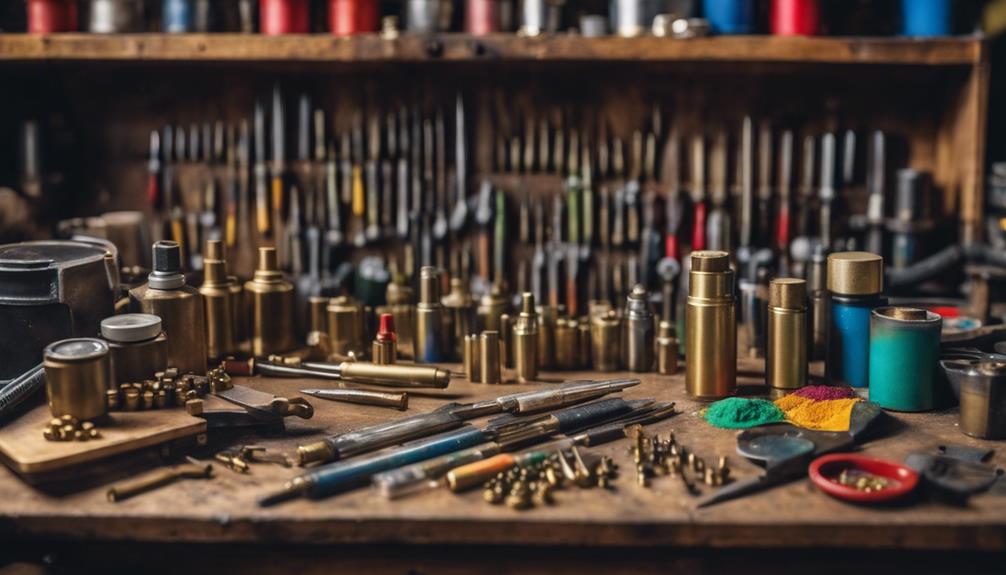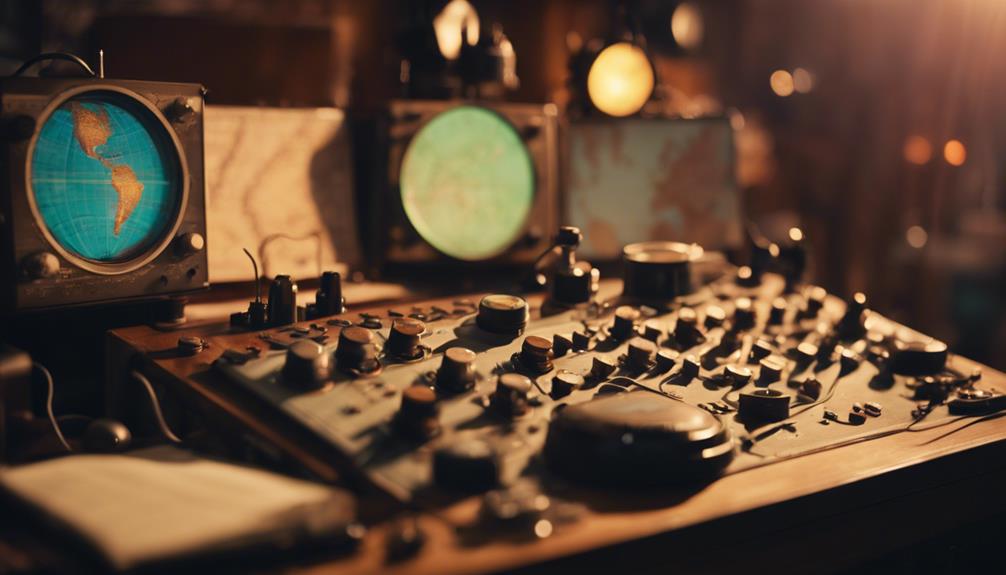Mastering ammo reloading is vital for your preparedness plan. It helps you guarantee a steady supply of ammunition when you need it most. Start by setting up a safe, well-ventilated workspace with good lighting. You'll need essential tools like a reloading press, dies, and a powder scale, which won't break the bank. Understanding the four main components—primers, brass, bullets, and gunpowder—is key. Follow a clear step-by-step process for safety and consistency. The more you know, the better your reloading will be, so stick around to uncover additional tips and best practices for efficient ammo reloading. Additionally, it’s crucial to familiarize yourself with proper safety measures and guidelines for handling gunpowder and other hazardous materials. Once you have mastered the basics of ammo reloading, you can consider exploring more advanced techniques, such as customizing loads for specific firearms or experimenting with different bullet designs. Just like mastering any skill, practice and patience are essential for becoming proficient in ammo reloading. With dedication and continuous learning, you may even find yourself delving into niche practices such as meat canning techniques.
Key Takeaways
- Prioritize safety by working in a well-ventilated area and using a sturdy, level work table to prevent accidents.
- Start with basic equipment, keeping initial costs under $500 for essential tools like a reloading press and dies.
- Understand the four essential components of reloading: primers, brass casings, bullets, and gunpowder for effective ammunition preparation.
- Regularly inspect and clean brass casings to ensure safety and reliability in your reloading process.
Reloading Safety Essentials
When reloading ammo, you've got to prioritize safety by working in a well-ventilated area away from any flammable materials.
Choose a sturdy, level work table that's around six feet long, ensuring it can handle the equipment and components you'll use. Good lighting is essential, as it helps you spot any potential hazards, and maintaining a dry workspace prevents accidents.
Always think about those around you; safety measures should protect not just you but anyone nearby. Avoid reloading in kitchens, basements, or attached garages where risks are higher.
Understanding Start-Up Costs
Getting into ammo reloading doesn't have to break the bank, with initial costs typically capped at around $500 for equipment and supplies. Here's a breakdown of potential start-up costs to help you budget:
| Item | Estimated Cost | Notes |
|---|---|---|
| Reloading Press | $150 | Essential for assembling rounds. |
| Die Sets (2-3) | $100 | Necessary for different calibers. |
| Priming Tool | $50 | Varies in style and efficiency. |
| Powder Scale | $40 | Guarantees accurate measurements. |
| Brass & Components | $160 | Includes bullets and gunpowder. |
While you may spend around $500 initially, remember to budget for ongoing supplies to maintain your reloading practice.
Basics of Ammo Reloading

Four essential components make up the basics of ammo reloading: primers, brass casings, bullets, and gunpowder.
Primers ignite the gunpowder, so they must match your brass casings and load specifications.
Brass casings are reusable, and saving them from shooting ranges can enhance your reloading sustainability.
When selecting gunpowder, be meticulous; the right type is critical to guarantee safe and effective rounds.
Always refer to reloading manuals for guidance on bullet and powder choices, as they provide significant information to prevent mishaps.
With these components in mind, you're laying the groundwork for a successful reloading experience.
Understanding these basics will help you navigate the reloading process confidently and safely, preparing you for whatever lies ahead.
Necessary Supplies and Tools
To successfully reload ammunition, you'll need a selection of essential supplies and tools that assure efficiency and precision in the process.
Start with a reloading press, the cornerstone of your setup, and make certain you have the correct dies for each caliber you're working with—carbide dies are a great choice for durability.
You'll also need vernier calipers to trim brass to the right length, along with priming tools that suit your preferences.
Don't forget a reliable powder scale for accurate measurements of gunpowder; this is vital for consistency and safety.
With these tools in hand, you're well on your way to mastering the art of reloading.
Always prioritize quality, as it directly affects your results.
Step-by-Step Reloading Process

Begin by inspecting your brass casings for any defects, discarding any that show signs of flaws to guarantee a safe reloading process.
Next, clean the brass thoroughly, ensuring it's completely dry before moving on. Apply lubricant to the interior of the cases per your reloading manual's instructions.
Now, insert new primers into each casing, ensuring they're seated correctly. Fill the cases with gunpowder, carefully following the specifications in your reloading manual to avoid overloading.
Then, place your bullets on top of each filled casing, ensuring a secure fit. Finally, check each round for consistency and quality.
After reloading, clean all your equipment to maintain functionality and safety for future sessions.
Frequently Asked Questions
What Types of Primers Are Best for Specific Calibers?
When selecting primers, you'll want to match them specifically to your caliber. For example, small rifle primers work well for .223, while large pistol primers suit .45 ACP. Always check manufacturer recommendations for ideal performance.
How Can I Store Reloading Supplies Safely?
"Better safe than sorry." Store your reloading supplies in a cool, dry place away from heat sources. Use locked cabinets for sensitive materials, and label containers clearly to keep everything organized and secure.
What Common Mistakes Should Beginners Avoid?
When starting out, avoid rushing through processes, neglecting safety gear, or skipping equipment inspections. Don't assume all supplies are interchangeable; always double-check compatibility. Finally, don't overlook the importance of following reloading manuals closely.
How Do I Know When to Replace My Reloading Tools?
You should replace your reloading tools when you notice excessive wear, rust, or malfunction. Regularly inspect them for damage and guarantee they perform accurately; a decline in performance indicates it's time for an upgrade.
Can I Reload Ammunition for Different Firearms?
Yes, you can reload ammunition for different firearms, but you must use the correct dies and components for each caliber. Always consult reloading manuals to guarantee proper specifications and safety for each firearm type.
Conclusion
By embracing the art of ammo reloading, you're not just honing a skill; you're crafting your own peace of mind.
With a little practice and the right tools, you'll find yourself in a world where you call the shots—literally!
So, roll up your sleeves and plunge into this rewarding endeavor.
You'll soon discover that creating your own ammunition is a fulfilling journey, one that keeps you prepared and confident in any situation that may arise.










